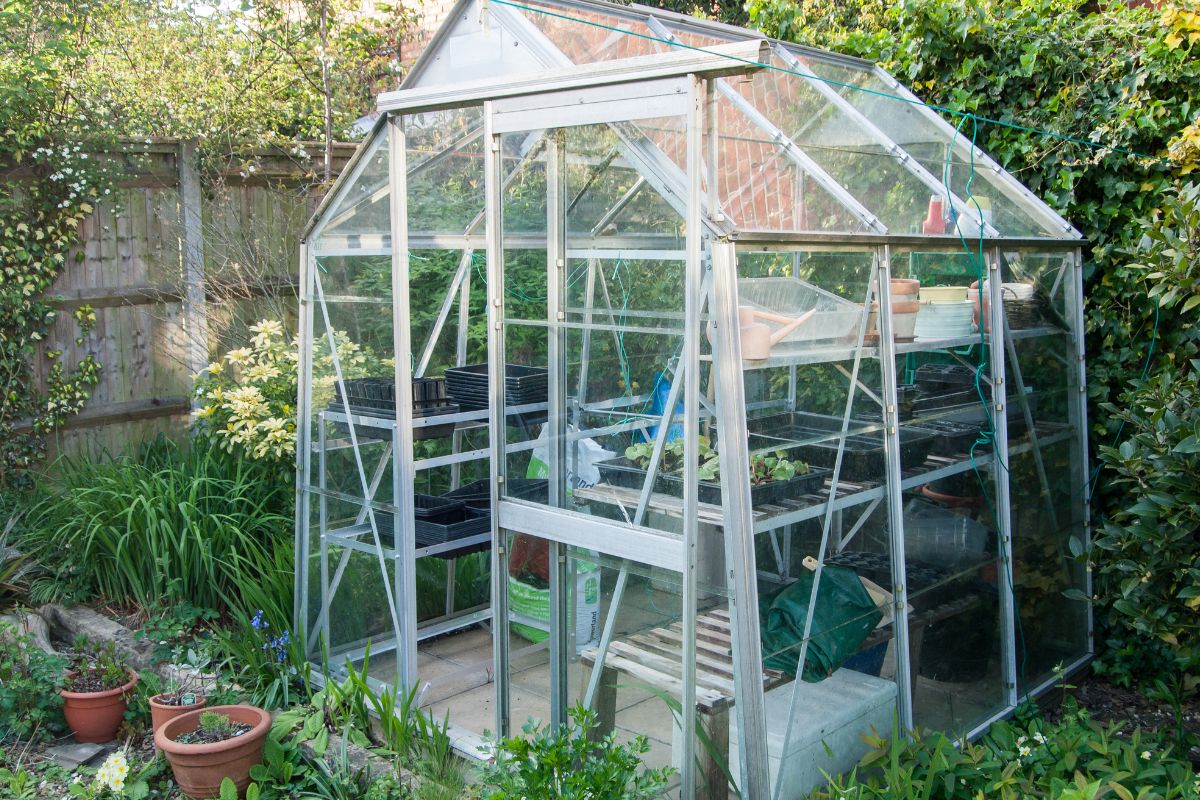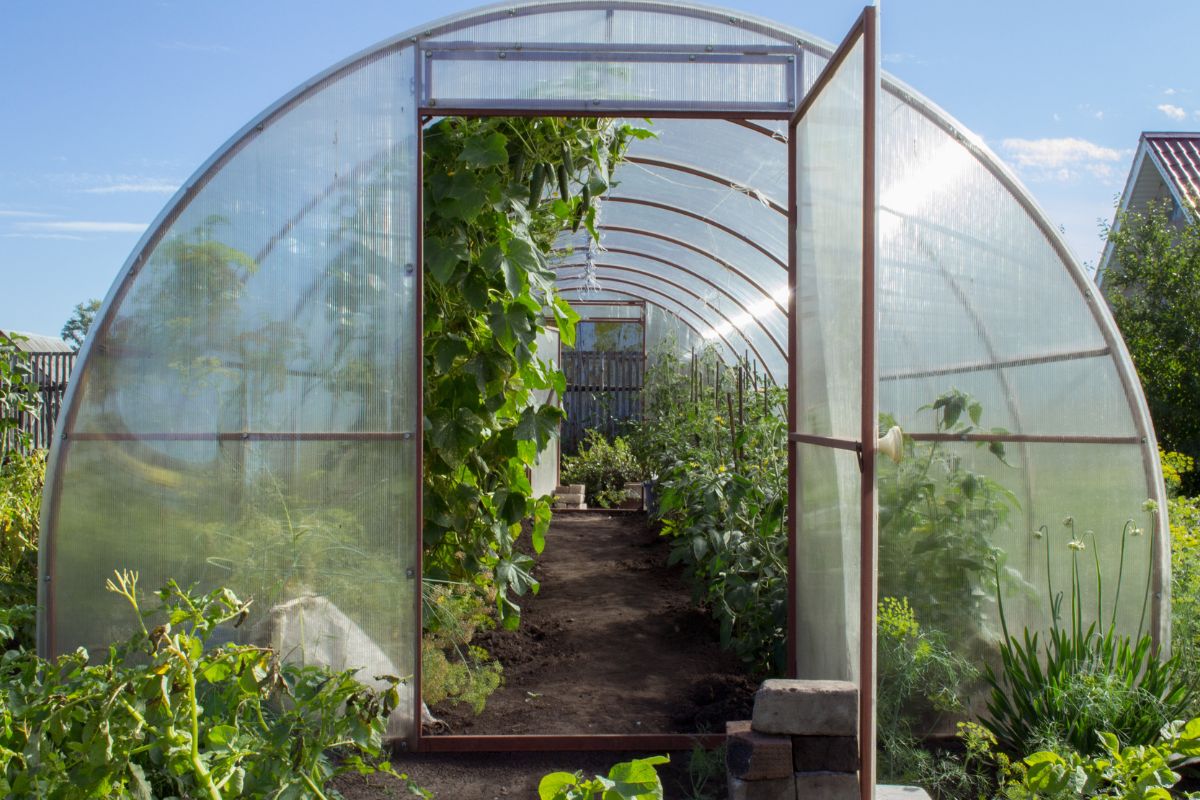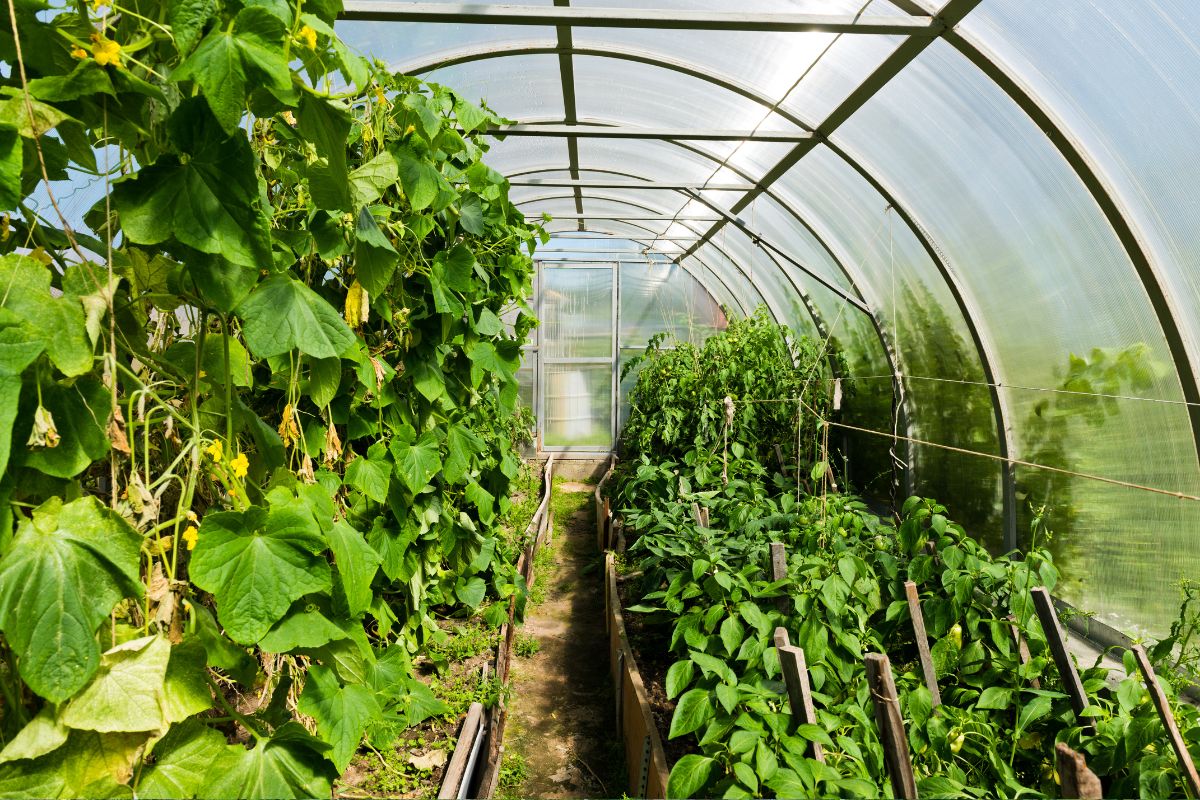Gardeners are often excited to start using greenhouses, as they provide a ton of benefits that can help take your gardening to the next level.
Among other things, greenhouses offer unparalleled control of the environment, and they may even allow you to work with species or cultivars you couldn’t normally grow. They also provide a fun (if sometimes muggy) space for you to work with your plants.
But greenhouses don’t always work out quite as well as intended. Often, gardeners make mistakes that prevent them from achieving the kind of results they want.
To help, we’ll share some of the most common greenhouse mistakes and explain how to avoid or correct them.
Whether you have yet to set up your greenhouse or you’ve already filled it up with plants, it’s a good idea to familiarise yourself with some of the most common missteps gardeners make. This will help you avoid making blunders and help you correct any that you may already have made.
1. Overcrowding Your Greenhouse
It’s easy to get carried away when setting up your greenhouse, and many gardeners end up cramming more plants inside than they should. But you’ll want to resist this urge, as overcrowded greenhouses often suffer from a variety of problems.
For starters, overcrowding a greenhouse can cause logistical problems and make it hard to move through the space and provide your plants with the care they need. It can also lead to poor air circulation, which will stress your plants and facilitate the spread of disease.
2. Not Planning for Your Plants to Grow
Before you break out the calculator and start trying to figure out how many plants will fit in your greenhouse, remember one key thing: Your plants are going to grow over the coming days, weeks, and months, and they’ll need more space as they do. So, always account for the mature size of your plants, rather than their current size.
It’s also important to keep the growing techniques you intend to use in mind.
Say, for example, you want to grow cucumbers in your greenhouse, but you don’t want to go to the trouble of setting up trellises. In this case, you’d need to allocate at least 1 to 2 square metres of ground space for every plant.
But if you go ahead and use some trellises, you can provide the support your cucumbers will need to grow vertically. This will save you tons of floor space as they grow and allow you to fit more plants inside your greenhouse.
3. Providing Insufficient Ventilation
While your greenhouse exists in large part to protect your plants from the surrounding environment, it is still crucial that you provide your plants with sufficient ventilation – you have to let them breathe!
Stagnant air can foster the growth of bacteria, fungi, and other pathogens, all of which can cause problems for your plants. This is especially important when growing tomatoes, peppers, watermelons, and other plants susceptible to powdery mildew. You may also see problems with damping off or notice leaf spot diseases spreading if your greenhouse doesn’t get enough airflow.
And because proper air flow also facilitates pollen movement, poorly ventilated greenhouses may not yield good fruit set for some plants.
You may be able to provide adequate ventilation by simply opening windows or doors in the greenhouse. But if your greenhouse is shielded from the breeze or the windows are not located in good locations, you may have to install fans to help provide more airflow.
4. Failing to Manage the Temperature Properly
One of the primary reasons that growers like using greenhouses is the temperature control they provide – you can keep your plants warmer in the winter or shield them from scorching temperatures in the summer. But unfortunately, many gardeners fail to take advantage of this fact and allow the temperatures inside their greenhouses to rise or fall outside of the appropriate range.
The ideal temperature range will vary depending on the specific plants you’re growing and your overall goals, but most plants will prefer daytime temperatures in the 21- to 29-degree Celsius range.
But some tropical plants will tolerate higher temperatures than this, while plants hailing from temperate zones may start exhibiting signs of heat stress if the mercury climbs above 30 degrees. So, it’s critical that you select plants that will all thrive in a similar temperature range.
Also, keep in mind that you want to let the temperature fall at night to help promote healthy growth. Typically, temperatures between 13 and 18 degrees work best.
Be sure to use a high-quality digital thermometer to monitor the temperatures in your greenhouse and let you know when you need to make adjustments. There are a variety of ways to adjust your greenhouse temperatures, including the use of heaters or heat mats when you need to warm the interior up, or by installing shading materials or allowing more air exchange when you need to cool it off.
5. Ignoring Pests
By their very nature, greenhouses help reduce some pest problems. The walls represent a physical barrier that’ll keep some pests away from your plants.
However, greenhouses are not hermetically sealed enclosures, and some bugs are guaranteed to get inside. And once inside, many pest species tend to build up to plague proportions. After all, the very walls that protect your plants also protect pest species from their natural predators.
Different pests require different management strategies, ranging from traps to organic pest sprays to conventional insecticides, but an integrated pest-control strategy is generally the best approach. Just don’t ignore pests, whatever you do – prompt action will help you nip the problem in the bud, so to speak.
An assortment of pest species can cause problems in greenhouses, but a few of the most common culprits include whiteflies, thrips, fungus gnats, and aphids. Caterpillars, slugs, and snails can also cause problems in some greenhouses.
6. Maintaining Improper Humidity Levels
It’s important to maintain a proper humidity level in your greenhouse to ensure your plants thrive. And this means not only preventing the humidity level from climbing too high, but also falling too low.
You’ll have to determine the proper humidity level for your specific collection of greenhouse plants, but somewhere between 40% and 60% relative humidity is a good starting point. However, tropical rainforest plants may require humidity levels approaching 80%.
Meanwhile, succulents and other desert-dwellers may start to languish if the humidity level climbs about 50%. Many herbs – including lavender, oregano, and thyme – also thrive best in relatively low-humidity environments.
It is usually easy to reduce the humidity level of a greenhouse; you can simply increase the amount of ventilation. Increasing the humidity level in a sensible way, however, is sometimes trickier. You don’t want to reduce the ventilation too much, or you’ll cause the airflow problems mentioned earlier.
Instead, you may simply need to add more water to the greenhouse by installing a decorative water feature or by regularly misting the plants that require high humidity levels.
7. Allowing the Greenhouse to Get Dirty
As gardeners, we tend to have a positive association with dirt. But there’s a difference between dirt and filth. If you want your greenhouse to be successful, you simply must keep it clean and well-organised. Filthy conditions can not only encourage the growth of bacteria and fungi, but they can also lead to disease outbreaks too.
Many lettuces, for example, are susceptible to damping off when grown in filthy conditions. Strawberries also tend to rot when not grown in a clean greenhouse.
So, make some time to clean your greenhouse every week. Minimally, you’ll want to put items in their proper place and wipe down all of the surfaces you can reasonably access with a mild disinfectant (using care to keep it away from your plants, pots, and soil). You’ll also want to disinfect your garden tools regularly to avoid spreading pathogens from one plant to another.
If you have a proper floor in your greenhouse, be sure to sweep it regularly (for extra points, run a mop over it every month or so). And don’t forget about those long-term cleaning duties, such as replacing any fan filters.
8. Providing Improper Amounts of Light
Light is life for plants, and greenhouses that aren’t lit well can’t support the kind of healthy plant communities we all want. That’s why it is critical that you position your greenhouse properly to ensure it gets enough sun exposure.
There aren’t many ways to increase the amount of light your greenhouse receives once you set it up, so make sure you keep the sun’s path through the sky in mind when picking its location and orientation. If you don’t, you may find it necessary to incorporate artificial lights or switch to crops that can thrive well in low-light levels, such as radishes or shade-tolerant lettuces.
You may have to consider the opposite problem at times – your greenhouse may receive too much sunlight (especially if you’ve placed it in a wide-open location that gets blasted with the sun all day). In these kinds of situations, you may need to incorporate shade cloths, reflective surfaces, or louvered panels to block some of the light.
Of course, you have to draw a distinction between light and heat. In some cases, you want a lot of light, without overheating portions of your greenhouse. Polycarbonate panels may help in these cases – they often allow 90% of the light striking them to penetrate, but they diffuse the light as it passes through. This helps to eliminate hot spots.
9. Ignoring Plant Placement Inside the Greenhouse
While it is wise to select an assortment of plants that’ll thrive in broadly similar conditions for your greenhouse, there are still going to be subtle differences between some of the crops you grow. And proper placement can help you turn this potential problem into a benefit.
As an example, let’s say you want to grow carrots and beetroot in the same greenhouse. This is a great combination of plants, as they both prefer loose, well-drained soils that allow the roots to develop well. So, you can prepare the growing area in the same basic manner.
However, beets tolerate shade better than carrots do. You may be able to use this to your advantage by sowing your carrot seeds in the spot that receives the most sunlight, while sowing the beetroot seeds in the shadier portion of the greenhouse.
But light isn’t the only variable you’ll want to factor into your placement decisions. The airflow, temperature, and even soil chemistry may also vary from place to place inside the greenhouse, giving you additional opportunities to make the most of your space.
10. Ignoring Soil Health
If you’re growing your greenhouse plants right in the ground (rather than in containers), you’ll find that the soil quality degrades over time.
The nitrogen, phosphorus, and potassium levels will fall, and you may see changes in pH and salinity levels too. You may even see soil pathogens start to build up if you aren’t employing good greenhouse hygiene practices. The constant foot traffic will also tend to compact the soil, making it harder for roots to spread properly.
Here are some tips to avoid this issues:
Prevent Compaction: Avoid walking on the soil in your greenhouse as much as possible. Create dedicated pathways or use stepping stones to minimize compaction. Regularly aerate the soil with a garden fork or aerator tool to improve drainage and oxygen flow.
Crop Rotation: Even within a greenhouse, rotating crops can help prevent the buildup of soilborne diseases and pests. Don't plant the same type of plant in the same spot year after year.
Replenish the soil: Just like any garden, greenhouse soil needs a steady supply of nutrients to stay productive. Regularly add organic matter to keep it fertile. Here are a few great options:
- Compost: This is the gold standard! Compost adds a wide range of nutrients and beneficial microbes. Aim to add a layer of compost a few inches thick at least once a year, and gently work it into the top layer of soil.
- Well-rotted Manure: Manure from herbivores like cows, horses, or chickens (make sure it's well-rotted!) adds nitrogen and other important nutrients.
- Cover Crops: During times when your greenhouse isn't full, plant cover crops like clover or buckwheat. These improve soil structure and add nutrients when you till them back into the soil.
***
Setting up a greenhouse is certainly exciting, but it’s also a lot of work. So, be sure to work smarter rather than harder. A lot of the problems discussed above are challenging to correct once you’ve made them, so do your best to avoid making them in the first place.








